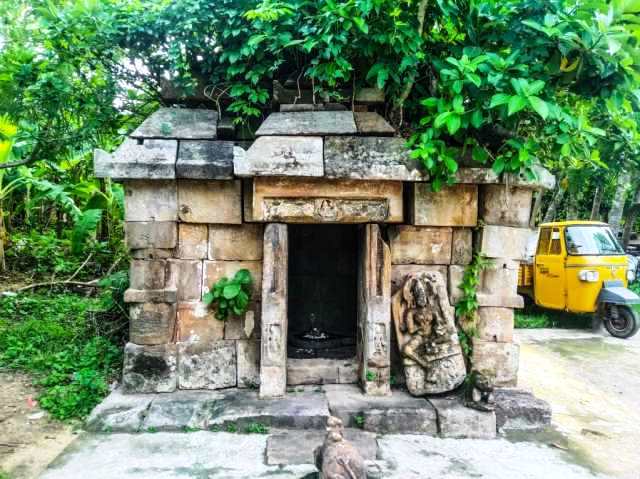Bhubaneswar: The ruins of an ancient temple dating back to the 6th-7th century and the earliest temples of the post- Gupta era were discovered by a survey team of the Odisha chapter of Indian National Trust for Art & Cultural Heritage (INTACH).
The team has stumbled upon the post-Gupta era temple while conducting a detailed survey of the Ratnachira Valley and its monuments.
INTACH project coordinator Anil Dhir said like the Prachi, the mythical Ratnachira is in its death throes. Legend has it that Lord Rama had drawn the river to quench Sita’s thirst, using her pearl ring to chart its course.
The ancient river, which now runs dry for most of the year, has many myths and legends with flourishing heritage on both sides of its short stretch, Dhir said.
The four member’s team led by Dhir documented the ancient site at Biropurusottampur in Pipili Tehsil. The temple, which is by the side of another middle era Ghateswar temple, is known as Swapneswar Mahadev.
According to Deepak Nayak, a team member it is in all probability an early stone temple. The region was a part of the South Toshali area of the ancient Kalinga kingdom and finds mention in copper plate inscriptions of the post-Gupta period.
The Kanasa plates of Sri Lanka Vigraha and Olasingh plates of Bhanu Vardhan, issued in the 6th/7th Century C.E., throw light on worshipping Maninagesvar (Shiva) and Naga Cult of the South Toshali region.
Taking into account the material and style of this temple, it is evident that it was built at least 1300 to 1400 years ago, and is among the oldest intact temple in the region.
Dhir said the temple’s ancient construction style is similar to the temples seen in the Mahendragiri hill ranges of Southern Odisha.
The square stone Khandolite stone blocks have no binding or cementing, they are placed one over the other in symmetry to constitute the temple wall and roof.
He said no evidence of iron clamps has been found. The neatly chiselled blocks denote an era when Kalingan traditional temple architectural style was in its infancy.
The temple is devoid of any external embellishments on both the inner and outer walls even the parsadevata niches are empty.
Unfortunately, this ancient monument is in a very dilapidated state and on the verge of collapse. The growth of thick vegetation on the top and the sides has caused severe damages to the ancient structure.
Dhir said the thick roots have split the stone blocks and wide cracks have developed, the rear wall is dangerously leaning backwards. The Garbhagruha gets flooded because of the leaks on the roof.
The entire temple may crumble down anytime if proper measures are not taken immediately, he warned.
According to Dhir, like the Prachi Valley, the Ratnachira Valley too is a treasure house of many archaeological wonders, most of them being obscure and unknown as they have not been documented.
A detailed survey is being undertaken by the team and many temples have been recorded, some of them in total ruins.
Nayak said the Swapneswar temple has hitherto not been listed or documented. The INTACH, he said is committed to document and record all such ancient neglected monuments of the state.
UNI

